Dear Friends,
For Mother’s Day, let’s go to The Huntington in beautiful San Marino, California, to look at Ralph Earl’s portrait of Mary Anna Boardman with her son, William.
First of all, Happy Mothers Day to all of us who are mothers and all of us who have mothers and all of us who take care of anyone or anything. That would be all of us. Sometimes, I like to deep sigh and say “if it’s not one thing, it’s your mother,” usually not meaning mine, often hoping that my own two daughters are simply glad they were born and then call me once in awhile. That might sound forlorn, but it’s actually ecstatic gratitude for the foundational gifts of life, upon which all of the other bells and whistles are heard.
To reach the portrait of Mary Anna and William, I’m going to skip the part where we take the 405 to the 10 to the 164, through East LA to Pasadena, or the 101 to 134, through Hollywood and Glendale, because the thought of driving in Los Angeles still triggers me even though it’s been decades since I attended UCLA and spent as much time in my car as I did in class. In my mind, I just want to parachute gently into the camellia garden, take that all in, stroll over to the roses, wander a little more until I’m surrounded by fields of forget-me-nots. I’m conjuring a total sensory experience, even though I haven’t been to the Huntington for a few years at least, I am getting a rush of moist air, and intoxicating floral scents--yes even though we are just minutes from all of those freeways.
Yes, it’s a complex complex, a maze of gallery buildings, library, and gardens that create an oasis that is hard to fathom when I really think about it. The city grew around it, of course, and I have to say that oh so long ago when I first came here, I thought it was so separate, so special, so isolated and apart. That felt both good and not good, good because I was usually there to study and just got to my books or pictures and appreciated the silence. But as I grew in my understanding of the importance of cultural centers to their communities, well that was when that sort of solitude and privilege felt off. Fast forward to now, a time when the Huntington is firing on all cylinders of inclusion, taking feedback, looking at collections anew, or to quote Robin Pogrebin in the New York Times, “The Huntington Gets Hip.” Robin refers to the current exhibition Made in L.A.: a version, that opens works from the collection to interpretation and understanding through the lens of living artists. For instance, even before we reach Mary Anna Boardman, we have to stop to look at Gainsborough’s Blue Boy, even bluer and more beautiful after a multi-year restoration called Project Blue Boy. And then thanks to the artist Monica Majoli, we are reminded of Blueboy magazine, an early gay monthly, and also of blue boys, police. And then back to Gainsborough’s lad. I like him even better since he made me think.
Two more lads before we reach Mary Anna and William, The Western Brothers by Copley with an intervention from the artist Buck Ellison, a photographer who assembles tableaux of collaged stuff from the lives of wealthy Americans. His work hangs next to the Copley. Have a longer look, the website for the exhibition is excellent. For now, the point for us is that by the time we reach our painting we are already in a frame of mind to look very closely and with abundant curiosity.
Earl’s portrait of Mary Anna Boardman and her son William is huge and bright and orange. Forgive me, that doesn’t sound so expert or art historical, but it’s worth gasping at first sight because the impact must have been intended. Wow that’s a big picture and the painter must have had a surplus of pink-orange or coral, the color of her dress, the table cloth behind her, her chair, and the curtain at right. The skirt of her dress is voluminous, draping on the floor in soft folds so deep that I wonder if she stood up if the dress would still pool around her. Her pleated and embroidered white collar goes around her neck, crosses in front and must fasten somehow in the back. A big locket hangs from the collar, probably a portrait miniature but we can only see the gold back. Let’s have a look at that hairdo: five rows of tight curls on each side of her head, with long tendrils hanging, on top of which are piles of ribbons, flowers, so elaborate, but after all it’s Mother’s Day. She’s got a riding hat on the table next to her, a smart number with a bright blue ribbon and gold buckle, one can only wonder how she would get the hat onto that hair. Maybe, just maybe, the entire coiffure is also like a hat, a sort of wig that she would remove to put the hat on before a ride. The landscape out the window certainly is inviting for a trot, a long blue river and mature trees, hills in the distance. Or perhaps the hat belongs to the baby, even though the child looks too little to ride and head too small. Baby is wearing a tiered dress, ruffles around the neck, poufy skirt, and holds a silver rattle with bells and a coral tip. Mama holds the end of the ribbon tied to the rattle, careful not to let it hit the floor. Oh, that floor, an ornate, geometric floorcloth with a repeated pattern of bursting medallions lined up between blue stripes.
Big sigh and I’ll repeat, if it’s not one thing, it’s William’s mother. It’s just so much, almost too much, so much fabric, texture, pattern, intricate details, stuff--the rattle, the locket, the necklace, the hair. But the scholars who know this work and it’s place, Betsy Kornhauser and Richard Bushman, came up with the brilliant revelation some time ago that Earl came up with this way of painting for a cohort of closely linked Connecticut patrons who sought portraits that would show them to be elegant and hard working, dignified and simple. Again, too much, but allow me to try to unpack this for now.
First of all, Ralph Earl’s life could be a Netflix miniseries, an artist well known and mysterious, a man from Massachusetts who disguised himself to get on a boat to London, a married man with a daughter who spent almost no time with them and then got married again in London, served two years time in debtors prison in New York, was apparently alcoholic, but gosh, who can blame him. In London, he studied with Benjamin West, this now becoming a theme of my various episodes, and spent a good amount of time looking at contemporary English painting. This is important, because the pictures he painted in London are of soft brush, subtle colors, vague details. He learned to paint in the English manner of the day and then abandoned it upon arrival back home. Between 1788 and 1798 he painted hundreds of portraits, all of which look more or less like Mary Anna’s picture, crisp and colorful and chock full of stuff.
Earl painted Mary Anna’s husband first, in 1789, although she didn’t know him yet.
Elijah Boardman’s portrait is Earl’s masterpiece, a picture that truly is the lynchpin to the others in terms of intent at the time. A dry goods merchant and importer of considerable wealth, Boardman could have gone to Boston or to London for that matter if he’d wanted a stylish portrait. It’s almost as if he and Earl devised a scheme for portraits that captured materiality and urbanity, but not quite too much. I can imagine Boardman saying to Earl, make sure to capture my good looks, my height, my sharp clothing, but let’s put me in my shop so observers will know that I work for a living, that I am an achiever. He knew his rank, which now sounds absurd, a rich man who knew his place among the very rich. But take it as fact that he knew he was not a so-called River God, one of the very wealthy families along the Housatonic River. The Boardmans knew their place in town, in church pews, in society and took great care to never show as noble, but equally to separate from the so-called rabble. Maybe those would be his enslaved workers, he had six by 1780, the largest owner of people in New Milford. Earl’s portraits boosted his profile, and he also painted Elijah’s parents, brother, and sister.
Elijah Boardman married Mary Anna Whiting in September 1792, they bought a new house on the New Milford Green in 1793, their first son, William was born in 1794, and the next year he began turning his dry good shop profits into land purchases in the Ohio Territory. (Someday, I’ll visit Boardman, Ohio.) Ralph Earl, who had moseyed on to other Connecticut towns, returned to Milford in 1796 to record the changes in Elijah’s life: wife and son, and house, which was painted in a separate picture to show his three properties. And if every picture tells a story, don’t it, we can imagine that Mary Anna’s picture social-climbs the family a little or a lot closer to those River Gods. Just imagine Elijah’s portrait hanging next to hers in their new Connecticut mansion: his portrait is the money, her’s is the show, his inventories the business, she wears the goods, literally. Scroll up, look closely at his portrait: I swear to you that the bolt of iridescent coral-colored fabric on the shelf in his shop is what made her dress and table cloth and draperies.
That was then, this is now, where do we go from here? Look, the interventions in adjacent galleries at the Huntington have sufficiently broken the spell, and even if Mary Anna’s portrait was not among the works of art selected by artists for reckoning, we know that each and every one of the historical American paintings here is open for inquiry and feedback and investigation. I’ll just say that whatever her lot--newlywed, new mother, horseback rider, River Goddess--today she looks weighted down by the stuff, poised and aware of her role, but also swathed in the color of strength. A blend of pink that stands for femininity and optimism with the spiritual energy of orange. If her son’s tiny coral rattle would ward off evil spirits, then her world of coral would protect her. She had five more children and lived to 81. Attagirl.
Take a Walk (to a Museum)
Just as the walk through the gardens to the galleries opened our minds, a walk afterwards pulls me back into my body, out of my racing brain, so much to think about, more and more, I need and want to give myself time to let all of my thoughts, new knowledge, further research paths, to settle, get absorbed, inspire me. A breath of fresh air and maybe into the Conservatory. I’m remembering now that none of this was here when Henry Huntington purchased a 207 acre ranch back in 1903, a citrus and nut grove. He was a railroad and real estate man, a New Yorker by birth, who took the family business out west. With his wife, Arabella, they groomed the ranch into a botanical garden and collected vast library and art collections, first sharing with friends and family, then open to the public in 1928, just one year after Henry died. One hundred years later, the Huntington is more connected to its community than ever, getting more and more curious about its collections, legacy, and promise. I love it here.
And Onward
I used to think a lot about all of the pendant portraits, that is portraits meant to hang together, of husbands and wives that have been split up over the centuries. Elijah Boardman in New York while his wife is in Los Angeles, for instance. There are many other instances, I’ll regale you next week, my favorite being Mr. and Mrs. Nathaniel Allen. She’s in Minneapolis and he’s in Honolulu!
Until then, keep walking and looking, slowly and with curiosity and courage,
Carrie







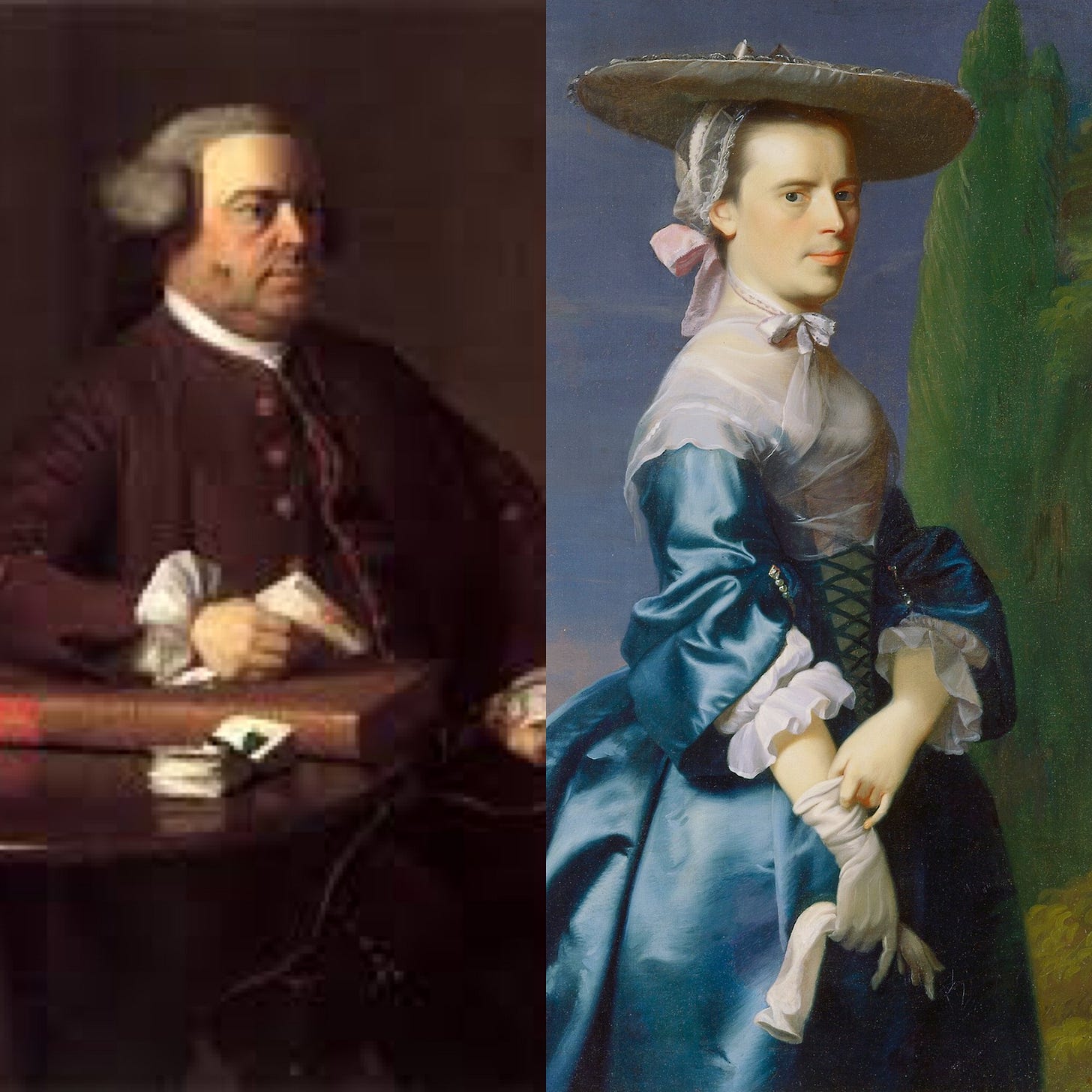

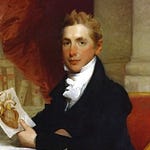


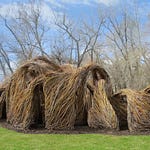
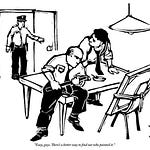
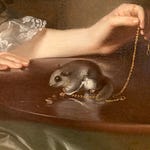
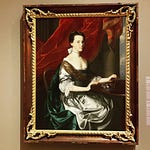
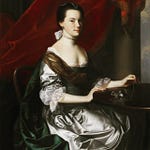
Share this post